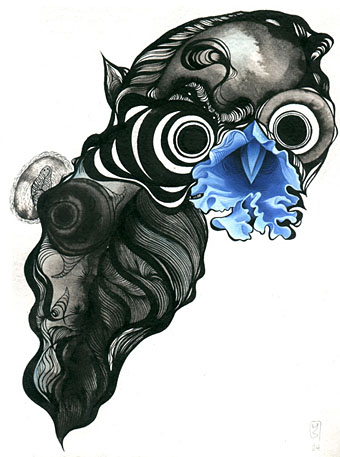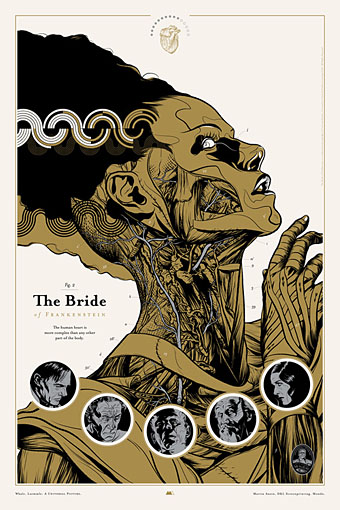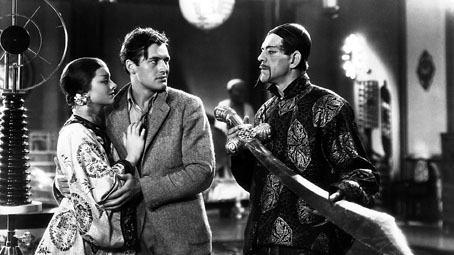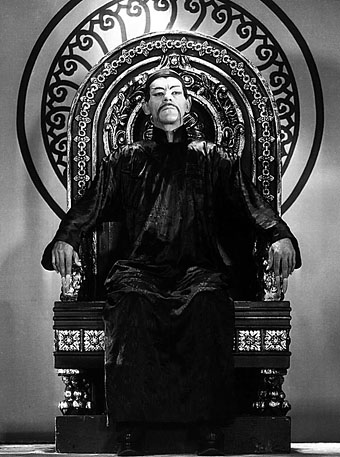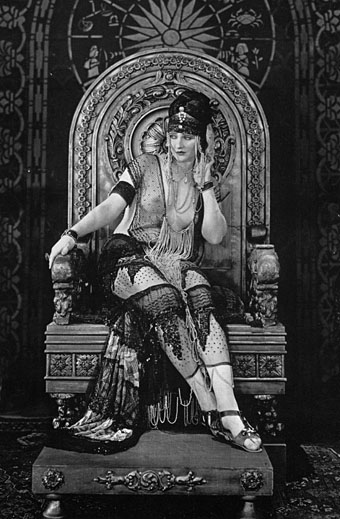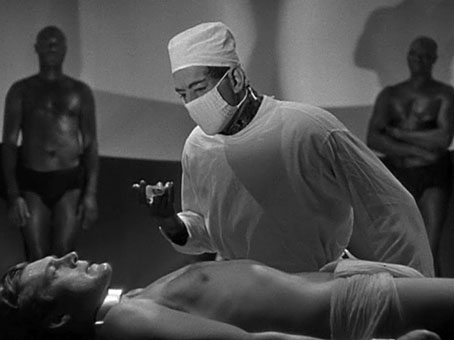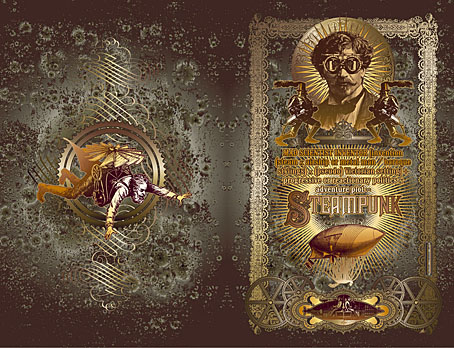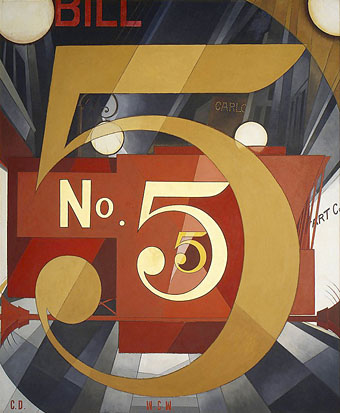
The Figure 5 in Gold (1928) by Charles Demuth.
It’s a little surprising to find I’ve been doing this for five whole years yet here we are. Having seen a number of blogs call it quits at the five-year point I should note that I don’t feel quite that exhausted although maintaining a discipline of daily posting can be a chore at times, especially when you’re pressured by work. On the whole the advantages continue to outweigh the disadvantages. Some of the discoveries here have fed back into things I’ve been working on or opened avenues for future exploration. Researching something for an audience (however slight that audience or the resulting post) encourages you to look more deeply into a given subject; sometimes you learn more as a result and occasionally make surprising discoveries. Obsessions are teased out which might otherwise have lain dormant. Yes, it’s an extra bout of work but I’ve spent much of my life saying to people “if you like that, you may like this”, and that’s all many of these posts are doing.
This year promises to be an interesting one so watch this space. And, as always, thanks for reading!
John x
On to the links…
• Cathedral Scan translates the architectural plans of Gothic cathedrals into open-ended musical scores via custom software. There’s more at Blake Carrington‘s website.
• Forty-three William Burroughs recordings (tape experiments and readings) at the Ubuweb archives.
• The opening scene of Deadlock (1970), an obscure German film with a theme by the mighty Can.
• Strange Lands: A Field-Guide to the Celtic Otherworld, a new book by Andrew L Paciorek.
• The enduring nature of Frankenstein, currently on stage at the National Theatre, London.
Owl One (2004) by Yuri Shimojo.
• ¡Activista! by Sonny Smith: Drag Queens, Borders, Rivers, Death and Transformation.
• Estonian sculptor Mati Karmin makes furniture out of Russian anti-submarine mines.
• Alan Moore’s contribution to the Save Our Libraries campaign.
• Innsmouth Free Press is raising funds for their running costs.
• A history of queer street art (Facebook link, unfortunately).
• Illuminated book design for Heston’s Fantastical Feasts.
• Physica Sacra, an engraving set at Flickr.
• Egypt (1985) by Tuxedomoon | Egyptian Basses (1998) by Coil | Soleil D’Egypte (2001) by Natacha Atlas.

